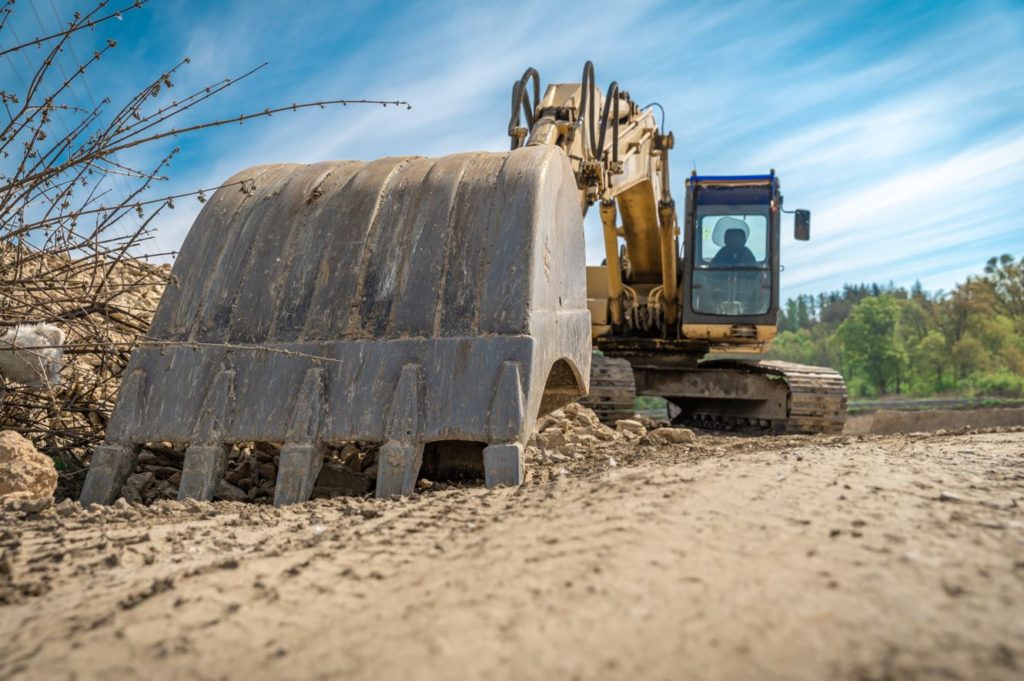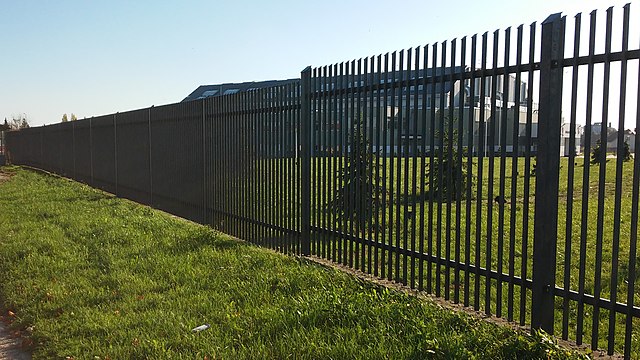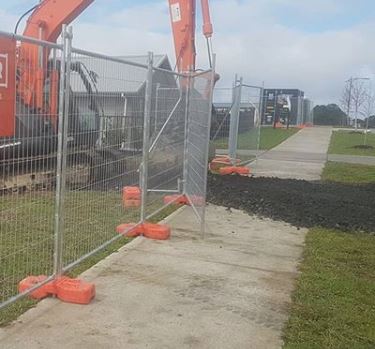Earthwork is used in practically every road building project and nearly every asphalt roads stabilization and repair project. Soil, whether in the form of undisturbed subgrade materials, transported and reworked base, or embankment material, is the foundation material for all roads and highways.
Clay softens and liquefies when exposed to large amounts of water, and this feature makes construction problematic due to clay’s low strength and stiffness. This has caused significant geotechnical engineering issues, as weak soil can undermine land stabilization and building foundations while producing fissures in buildings and asphalt pavements road surfaces.
The loads on the pavement must be transferred to the base and subbase. The road will quickly deteriorate if enough help is not available. A good road necessitates a solid base and soil stabilization solutions, which necessitates material stability. Whether wet or dry, a material is stable if it has little or no volume change and resists deformation under repeated or prolonged stresses.

What is subgrade stabilization?
The use of reinforcement components to offer constructability and access across very soft soils is known as subgrade stabilization. Subgrade solutions create a flat, non-yielding platform with consistent support.
Soil stabilization is the modification or preservation of one or more soil features in order to improve the soil’s characteristics and performance from an engineering aspect. Soil stabilization is the process of adding specific soil, cement, or other chemical compounds to a natural soil in order to change one or more of its qualities.
Stabilization is achieved through a variety of approaches for altering a soil’s properties in order to improve its engineering performance. Soil stabilization can be accomplished by mechanically combining natural soil and stabilizing material to create a homogeneous mix, or by adding stabilizing material to an undisturbed soil deposit and allowing it to seep through soil voids to interact. The qualities of less attractive road soils are improved when they are stabilized using additives. These soil stabilizers can improve and maintain soil moisture content, promote soil particle cohesion, and act as cementing and water proofing agents when used properly.
What is the purpose of soil stabilization?
Not every building site is suitable for construction. A contractor at such a site will typically have the reasons indicated above for soil stabilization. There are a variety of reasons for implementing soil stabilization, including:
Chemical and mechanical soil stabilization
- Substituting poor-quality soils with aggregates with better engineering qualities.
- Strengthening of the soil and, as a result, its bearing capacity.
- Dust control is essential for a healthy working environment.
- Waterproofing is used to keep natural or man-made structures from deteriorating.
- Encourage the use of waste geomaterials in construction projects.
- Finally, improving the soil qualities on-site.
How Do You Stabilize Soil?
To make the soil appropriate for construction, soil stabilization employs physical and/or chemical procedures.
A Soil Stabilizer pulverizes the existing surface during Soil Stabilization. Then, to increase bearing capacity and improve characteristics, chemical or bituminous additives are used. Lime, fly ash, soil cement, and cement are examples of such additions. After that, the improved material is graded and compacted to create a high-quality basis that can handle the required stresses.
The following are the main steps in soil stabilization:
- Evaluation of soil qualities
- Selection of a method for restoring missing properties
- Creation of a stabilized soil mixture for the required purpose
- Calculation of compaction parameters
What are the soil stabilisation methods?
- Mechanical stabilization — by mixing and compacting two or more soils and/or aggregates, the goal is to achieve dense, well-graded material.
- Chemical stabilization – is the process of modifying the chemical make-up of soil by adding different additions such as lime, cement, or fly ash, or by adding compounds such as polymers, resins, and enzymes.
- Planting of vegetative cover to reduce wind, water, and soil erosion is referred to as Biological stabilization. Although various techniques of stabilization should be utilized to assist the growth of seeds and seedlings in the beginning, the roots hold and agglomerate soil particles together.
Stabilizing soils is a typical practice used in the construction of airfields, parking lots, landfills, embankments, existing pavement roads and foundations, river management, agriculture, and mining sites, among other things. The type of stabilization utilized depends on the location; it could be a single method or a combination of the two.
All of these techniques can be divided into two categories: mechanical stabilization and chemical stabilization.
Mechanical stabilization is the practice of altering the gradation of soil to improve its qualities. To improve stability, mechanical soil stabilization entails combining different soil types. The engineering properties of some soils are poor. These are soils that have a lot of clay, silt, or fine sand in them. As a result, more appropriate soils with granular material can be added to in situ soils to improve overall qualities. The mechanical strength of aggregate, the mineral content of the materials, the mixture gradation, the flexibility of the binder soil, and the compaction done all play a role in the stability of soil-aggregate mixtures. When it comes to mineral composition, sodium sulphate and sodium carbonate have a negative impact on soil stability due to their significant volume changes induced by changes in water content, whereas chlorides and carbonates help to stabilize the soil.
Mechanical soil stabilization has the following drawbacks:
- large cost and carbon footprint,
- heavy equipment, labor, and time demands, and substantial traffic disruption
Cement and lime are the most commonly utilized chemical additions.
The strength and durability of a structure increase as the cement content rises. Cement’s use is restricted due to its expensive cost. The influence of surface chemical variables, organic matter, and sulphate content reduces the durability of cement-treated soil, while the presence of magnesium sulphate, which reacts with hydrated cement, might produce a drop in strength.
Lime application produces lime dust, making it unsuitable for populated regions. For optimal compaction, accurate water content is critical. When lime is included, a longer mixing time is necessary, making the process uneconomical.
What are the materials used in soil stabilization?
The materials used in soil stabilization vary depending on the technique. The following is a list of soil stabilization approaches that includes biological, chemical, and mechanical methods:
- Different grades of soil.
- Different grades of aggregates.
- Seedlings
- Seeds
- Hydromulch mixtures
- Hydroseeding mixtures
- Geomaterials – geogrids, geoblankets
- Polymers -synthetic and natural
- Synthetic resins
- Emulsions
- Cement
- Lime
- Fly ash
- Bitumen
- Recycled and waste products – solid municipal, mining and industrial wastes.
Cement and lime stabilization are the most prevalent methods of clay soil stabilization in pavement work. The oldest traditional chemical stabilizer used for soil stabilization is lime, often known as calcium carbonate.
Subgrade Stabilization with Cement
Cement is a finely crushed inorganic material that, when mixed with water, forms a paste that sets and hardens through hydration reactions and processes, retaining its strength and stability even when submerged. The most popular type of cement is ordinary Portland cement. Lime, silica, alumina, and iron oxide are the raw materials used to make it. In a rotary kiln, these elements are crushed and combined in the proper quantities before being burned. To make cement, the clinker is cooled, combined with gypsum, and ground to a fine powder. Calcium silicates and aluminates are the most common chemical components found in cement.
Cement is widely utilized as a soil stabilizing material, particularly in highway and earth dam building. It can be used to help soils that are sandy or clayey stay stable. Cement, like lime, has the effect of lowering the liquid limit while increasing the plasticity index and workability of clayey soils.
Soil-cement stabilization is a term used to describe cement stabilization. Soil-cement is a moist mixture of soil, cement, and water that is densely packed to a high density. The soil-cement mixture cures to make a strong, stiff base course. Soil-cement can be used as a base asphalt stabilization for a thin, light- or medium-traffic wearing surface, or as a support for a high-type flexible or stiff pavement.
The native soil is amended with Portland cement in amounts ranging from 3 to 16 percent by volume of the compacted mixture. Almost all soils can be stabilized using portland cement, however silts and heavy clays require a high percentage of cement to work properly. Cement stabilization is different from other methods of stabilization in that it actually hardens the soil material, giving it structural strength rather than waterproofing or cohesiveness.
Proper moisture content, acceptable compaction, and proper cement content are the three main control elements for soil-cement. Laboratory testing of representative soil samples should be used to determine these. Pulverized dirt is combined with just enough portland cement and water to achieve maximum compaction. The price varies a lot.
Lime Subgrade Stabilization
When the moisture content of a soil is allowed to rise, clay-rich soils have a propensity to inflate.
To improve plastic clay soils, quicklime or hydrated lime can be used to stabilize the soil. Lime is a strong alkaline base that chemically combines with clay to generate complex silicates and other cementing elements. High calcium or dolomitic lime can be utilized, although powdered limestone is not recommended due to its chemical inertness. Lime allows marginal and submarginal soils to be upgraded into acceptable base and subbase materials. It also makes polymeric soils more workable, making them easier to pulverize. Lime tends to waterproof the soil to some amount and causes it to dry out faster when saturated, allowing construction to move more swiftly.
Lab testing is used to determine the amount of lime to utilize. The amount employed in subgrade therapy, on the other hand, is usually between 3 and 6 percent.
Scarification and pulverization of the subgrade soil to a depth of six inches is followed by the application of lime, which is commonly done with a mechanical spreader. Enough water is added to raise the moisture content to 5% or higher above the ideal level. Curing time for the lime-soil mixture varies from one to seven days. The mixing and crushing process is repeated until all of the material passes through a 1 inch sieve and 60% passes through a number four sieve. Pneumatic rollers or vibrator compactors are used to compact the material. Before applying the next layer, the compacted layer must cure for three to seven days. It is preferable to keep heavy traffic off the road throughout the drying process.
Calcium Chloride
Calcium chloride is utilized to get the most out of properly graded quality aggregates; it is not used to alter the characteristics of substandard or suspect materials. Calcium chloride has the ability to draw moisture from the air and hold it. It aids in the retention of moisture during the service life of the soil-aggregate combination and speeds up the compaction process by decreasing the rate of evaporation of moisture from the mixture during compaction. Small quantities of calcium chloride will increase density for a given compaction effort in many cases. The initial application rate is around 12 lb./sq.yd. per inch of thickness.
Soil Stabilization Benefits
At Eastcoast Site Work, we specialize in soil stabilization and erosion control to ensure the integrity of your construction projects. Our expertise in soil stabilization nt and advanced techniques help maintain soil levels beneath the topsoil, preventing ground shifts or cave-ins during construction.
To determine the most effective approach, we collect soil samples and combine them with stabilizing materials like cement. This process strengthens the soil, making it more resistant to the pressures of construction.
One major cause of road failures, fissures, and potholes is the increase in water content within granular subgrade materials. By applying our road-hard soil stabilizer techniques, we enhance the soil’s load-bearing capacity, enabling it to withstand the negative impacts of construction operations.
In the soil stabilization mining industry, it is crucial to achieving cost-effective pavement, embankment, and subgrade designs while minimizing future maintenance costs. Stabilizing soil during construction is essential, and in many cases, the use of soil additives is the most efficient method.
Given the wide range of soil types found in nature, a well-planned engineering strategy is vital for successful outcomes. At Eastcoast Site Work, we offer both chemical and mechanical soil stabilization methods to cater to various project requirements.
Our chemical soil stabilization methods involve the use of additives to alter soil properties, while our mechanical stabilization definition includes processes such as compaction, reclamation, and reinforcement to strengthen the soil mass.
Whether you need to stabilize weak ground or deal with granular soils, our team of experts is here to provide tailored solutions for your specific needs. Trust Eastcoast Site Work for all your soil stabilization and erosion control requirements.
Frequently Asked Questions
Q: Disadvantages of cement stabilization procedure?
A: While cement soil stabilization can be an effective method for improving the stability of soil and increasing its load-bearing capacity, there are also some disadvantages to using this procedure. Some of the disadvantages of cement stabilization include:
- Cost: Cement-stabilized soil is typically more expensive than other soil stabilization methods such as lime stabilization or polymer soil stabilization.
- Time-Consuming: Cement-stabilized soils require several days of curing time before stabilized soil can be used for construction.
- Difficulty with Soil Properties: Cement stabilization may not be effective with certain types of soil, such as soils with a high organic content or high plasticity index, or sandy soils.
- Low Tensile Strength: While cement-stabilized soil may be strong in compression, it can have lower tensile strength, which may lead to cracking and erosion over time.
- Material Disposal: Cement stabilization can create excess waste, and the disposal of leftover materials must be properly handled to prevent environmental contamination.
Additional Resources
- What is a retention pond and why is maintenance important?
- How to Estimate Sitework and Site Work Costs
- This is a great article to read about Why choose hydroseeding to establish a lawn instead of sod or dry grass seeding.
- Types of Soil Erosion and Mitigation Strategies



